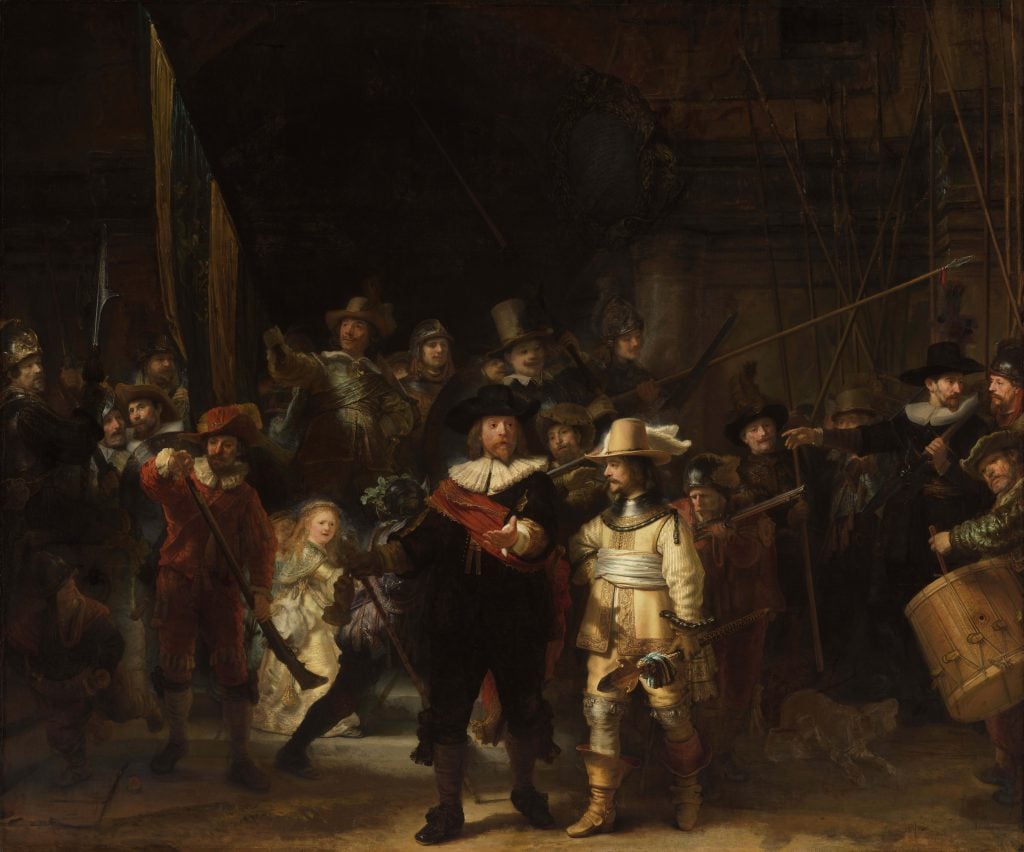Art & Tech
A New X-Ray Analysis of Rembrandt’s ‘The Night Watch’ Reveals a Hidden Base Layer
Scientists have hypothesized that Rembrandt may have had a clever reason for applying the protective layer.

Scientists have hypothesized that Rembrandt may have had a clever reason for applying the protective layer.

Jo Lawson-Tancred

A new x-ray analysis of Rembrandt’s The Night Watch has revealed that the mammoth oil painting contains a hidden base layer of lead. The 1642 work, one of the Dutch Old Master’s most famous, hangs at the Rijksmuseum in Amsterdam. It has been undergoing a major conservation project called Operation Night Watch since 2019.
The finding, published in Science Advances last month, was made thanks to analysis of the layered chemical composition of a tiny paint sample, which underwent both x-ray fluorescence and ptychography, a computational imagining technique. It appears that before starting the painting, Rembrandt coated the raw canvas in a lead-dense layer of oil in broad, semi-circular brushstrokes. The canvas was further prepared by applying a ground layer made up of quartz-clay.
This new knowledge will help conservators better look after the work but for now we can only speculate about Rembrandt’s reasoning. The researchers have hypothesized that the lead may have been intended to protect against the threat of humidity since the painting was destined to be hung on an exterior wall at a musketeers’ shooting range in Amsterdam.
“Although not generally used, the method of impregnating a canvas with lead-containing oil was described in an important contemporary source describing painting techniques written by Théodore de Mayerne,” the report noted. “Here, the method of using a lead-rich oil (oil of litharge) instead of glue is advised after observing a case in which the paint and glue-sized canvas of a painting separated after hanging on a damp wall for several years.”
This is not the first major discovery made about the painting in recent years. In 2021, conservators found a previously unknown preparatory sketch hidden within a “calcium map” of the masterpiece that reveals all the ways in which it ended up diverging from Rembrandt’s initial plan. For example, the artist decided to remove a plume of feathers from one military man’s cap.
“It is fascinating to see Rembrandt searching for the right composition,” commented the Rijksmuseum’s director Taco Dibbits at the time. “We have discovered the genesis of The Night Watch.”
In 2022, the museum disclosed more secrets about Rembrandt’s techniques, this time discovered in partnership with scientists from AkzoNobel, the Dutch owner’s of Dulux paints. The research team tried to determine the recipe that Rembrandt used to layer his paints impasto style on the canvas. It appears he mixed raw linseed oil with lead oxide and added the secret ingredient of egg yolk for reasons that aren’t yet completely understood.
More Trending Stories:
Art Dealers Christina and Emmanuel Di Donna on Their Special Holiday Rituals
Stefanie Heinze Paints Richly Ambiguous Worlds. Collectors Are Obsessed
Inspector Schachter Uncovers Allegations Regarding the Latest Art World Scandal—And It’s a Doozy
Archaeologists Call Foul on the Purported Discovery of a 27,000-Year-Old Pyramid
The Sprawling Legal Dispute Between Yves Bouvier and Dmitry Rybolovlev Is Finally Over